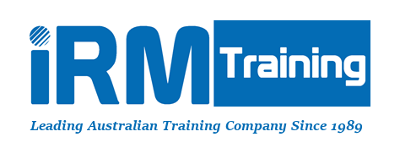IRM Training has recently conducted research and what we found was that 58% of Business Analysts use interviews as one of their primary methods of elicitation, or, gathering requirements. The real time and direct interactions can make interviews very effective for extracting information, providing that you know how to ask the right questions. When done well, an interview can be used to clarify any ambiguity as well as verifying facts of business background research. It gives a great opportunity to extract…
Continue ReadingArticles
Download a Requirements Specification Template
Free 12 page requirements specification template to help business analysts document all the key requirements of a project – business, stakeholder, functional and non-functional. This template from our Writing Better Requirements course serves as a guide for setting out your requirements specification document. When starting a new project, this template can be used as a map to help you approach your business analysis work. Remember, up front planning helps you avoid going off-scope and over time. Our Requirements Specification template…
Continue ReadingMost Popular Business Analysis Techniques
It can be difficult to keep up with the most popular business analysis techniques. Do you know which methodology analysts have the most experience using? How about diagramming techniques? We conducted a survey of over 1,100 business analysts (68% with over 5 years experience) which gave some interesting results as to what business analysis techniques are the most popular. Methodologies When it comes to software development methodologies, 68% said they had experience with waterfall development, 46% said iterative whilst object-oriented…
Continue ReadingJobs Outlook for Business Analysts
Did you know that the Department of Employment undertakes research into job prospects for business analysts. Their forecast is for continued growth in employment prospects through to 2020. The research also contains useful information on average earnings and typical skills required. The Department has, as you would expect, an in-depth understanding of the Australian business analyst jobs market as well as access to statistics and data not necessarily available to private industry. One of the Department’s initiatives is the…
Continue ReadingBPMN vs UML vs DFD – which one is best?
While many large companies still describe their requirements using the written word, there is a huge amount of evidence that pictures (i.e. modelling languages) are a clearer and more reliable method of communication. A 2016 survey of Australian business analysts across 30 organisations (government, big business, SMEs) found that while 14% used one or more of the popular languages (DFD, UML, BPMN) regularly, the vast majority 76% did not or only very occasionally. This shows that a small number of…
Continue ReadingAnalysis – the other side of the fence to design
Analysis is an important part of life here at IRM and we like to help keep our readers up to date. Last month’s IRM newsletter featured an article focusing on the value-add a business analyst can provide by designing business solutions for their clients. But before you can design anything, you need to understand what the problem is. Whatever technique you might use – interviewing, observation, process decomposition, root cause analysis – you have to live up to the…
Continue ReadingBusiness Analyst or Business Solution Designer?
At IRM we’ve long argued that investigating, eliciting and gathering requirements (i.e. analysing business problems) is only half the job of a business analyst. Sure the business wants you to understand their problems but more importantly they want you to come up with a solution. And not a technical solution but a business solution. As a business analyst you definitely need to understand how technology can be exploited. Just leave the technical (i.e. physical) design to others who specialise in…
Continue ReadingBoom in ICT hiring but are your skills falling behind?
There may be a boom in technology hiring for those with ICT skills but many employees feel let down by the lack of training. A recent (July 2016) article in ITWire – based on research conducted by recruitment company Hudson – throws up some interesting statistics: 31% of Australia companies surveyed plan to increase hiring 44% of employees were actively looking for new jobs So the good news for job seekers with ICT skills is that there are a lot…
Continue ReadingBusiness BA or IT BA – which one are you?
Like a business analyst, the terms hard and soft skills can be applied to many occupations. Think of a programmer who is predominantly concerned with applying hard skills (writing software) or a social services counsellor who needs to be an expert in people (soft) skills. However there are not may jobs requiring a strong mix of both hard and soft skills, the business analyst being a notable exception. You’ll need people skills to empathise with clients and explore their needs…
Continue ReadingWhat do Business Analysts and Graphic Designers have in common?
This month’s article returns to a theme relevant to all business analysts – visual communication. I don’t mean putting text on PowerPoint slides, instead it’s about using diagrams and sketches to understand as-is systems and to explore to-be solutions. Here are just a few examples of how diagrams can kick-start a conversation: • Can you draw me a diagram of how you’re process currently works • Where are the bottlenecks? • What if we tried re-arranging the sequence of steps?…
Continue Reading